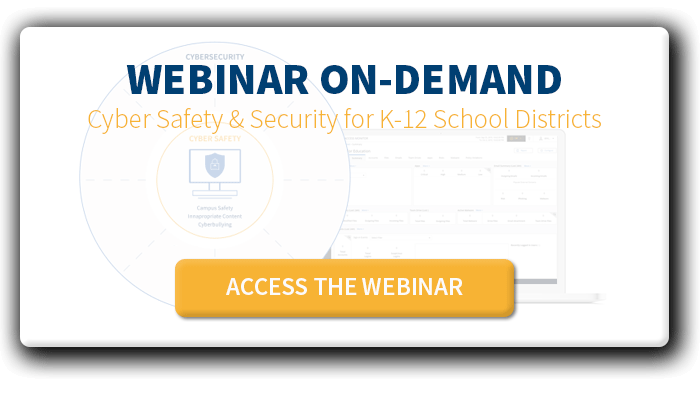K-12 IT: You’re Not A Child Psychologist!
But you can use your IT expertise to help—without losing your sanity!
Schools need to prepare students for their future. And that future requires computer literacy. To meet the demands of a technology-driven future, schools are moving classroom curriculum into the digital world. At the same time, administration is using the many benefits of cloud computing to manage district and school operations. Today, this means that K-12 IT teams are dealing with a veritable explosion of cloud applications.
The movement also means that students are spending more time online. They are online at school, when doing their homework, socializing with peers, and for entertainment. The technology-driven environment that students practically live in is producing new concerns among parents and school staff.
Cyber Safety & Security: Converging Issues in K-12
As school districts move to online and SaaS applications for administration and classroom learning, issues of student safety and data security are converging for most K-12 IT teams.
While IT’s focus has always been on maintaining information systems and securing the network, the game is changing. Moving to cloud applications, such as G Suite and Office 365, require new approach to data security.
As student online activity increases tremendously, administrators and campus safety teams are increasingly turning to IT for answers when incidents occur.
{ON-DEMAND WEBINAR} CLOUD SAFETY & SECURITY FOR K-12 SCHOOL DISTRICTS >>
Cyber Safety in K-12 IT infrastructure
Now that students are online so much of their time, they often use school technology for non-school related communication purposes.
It’s recently become more well known that Google Docs is the new way to “pass notes” in class. Behaviors such as cyberbullying, discussing self harm and/or suicide, threats of violence, and explicit content are now being shared online and in school cloud applications. A big problem with this trend is that, for many school districts, there is no way of knowing that any of this is happening on or off campus.
Most often, when incidents erupt on campus, it’s a sign of a boil-over from conversations and other activity that is happening online.
Cybersecurity in K-12 IT infrastructure
K-12 cybersecurity is not a small topic, cybersecurity incidents in schools are on the rise. At the same time, Google has taken over the classroom. But it’s not just Chromebooks and G Suite that are making K-12 IT managers lose sleep. The EdTech industry is growing fast, with vendors promising all in the “next best thing” for everything from attendance, to classroom management, to testing, and more.
Each of the thousands of SaaS applications that make their way into a school or district environment pose a potential risk to employee, parent and guardian, and student sensitive information systems. The sensitive information is protected by government regulations, such as FERPA and HIPAA. Information that all school districts store include:
- Student and parent/guardian social security numbers
- Student and parent/guardian addresses and contact information
- Student health information
- Faculty and staff social security numbers, contact information, and payroll information
K-12 IT Can Help—Without Losing Your Sanity
K-12 IT teams are overwhelmed. The scope of responsibility for student safety issues is a lot to take on for those that are not trained in child psychology. It’s best left up to counselors and safety resource personnel. But, you can’t put Pandora back in her box.
Other K-12 IT teams are successfully putting tools and processes in place that allows them to use their unique expertise to help with cyber safety issues—without taking too much focus away from also important IT work.
Using a layered tech stack that incorporates data security, campus safety, and content filtering and inspection provides K-12 IT teams with the greatest amount of control over what is happening in school technology environments. Using the right kind of data tools, you can manage these things through one dashboard, and send critical information to student resource professionals when they need it.
Learn how Justin Feltus, Systems Specialist at Bremerton School District, makes student cyber safety a priority—without sacrificing the work that needs to be done to protect sensitive student, parent, and staff information from criminals.
The post K-12 IT: You’re Not A Child Psychologist! appeared first on ManagedMethods.
*** This is a Security Bloggers Network syndicated blog from ManagedMethods authored by Katie Fritchen. Read the original post at: https://managedmethods.com/blog/k-12-it-youre-not-a-child-psychologist/






